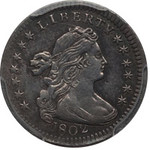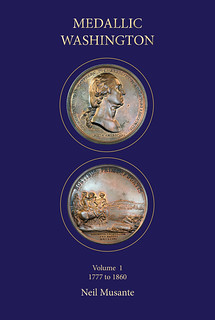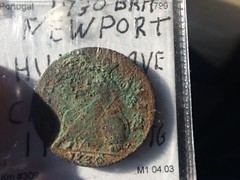
PREV ARTICLE
NEXT ARTICLE
FULL ISSUE
PREV FULL ISSUE
NOTES FROM E-SYLUM READERS: DECEMBER 2, 2016On Serially Numbered Numismatic Books With respect to Gary Beals' article in last week's E-Sylum, I have some experience. This past summer I published my book, Philippine Emergency notes: Counterstamped, Signed & Initialed (CSI) - Cebu Province. It has an initial printing of only 200 copies and I decided to serially number each book. I also included an original 1941 One Peso Philippine National Bank Note from Cebu whose last two numbers of the serial number matched the last two numbers of the book number. It was time-consuming to stamp a serial number in each book, especially since I used the old fashioned type of numbering machine in which the rubber wheel has to be advanced for each new number. If I had used the machine Gary mentioned, the numbering would have gone a lot faster. Also, for a print run larger than my 200, Gary's machine would be much more practical. I did consider hand numbering the books but decided against it, since the numbers could be too easily changed. I found that a few individuals liked the idea of a serially numbered book. This was especially true for those individuals who have lucky numbers or collect specific serial numbers on banknotes. Would I do it again? I guess the answer would depend on the size of the print run and whether or not I had the time. Finally, I should mention that I only sign my book when requested by the buyer and I ask them how they want it signed. Personally, I like books signed by the author but not books which also include a written dedication to a specific individual. Thanks. I generally like personalized inscriptions, and if the recipient is a known numismatist, all the better. what do readers think? Do you have a favorite inscribed numismatic
book in your library? -Editor
To read the earlier E-Sylum article, see: Ceylon 96 Stivers Returns Home 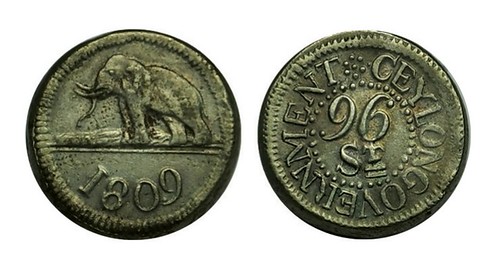 Kavan Ratnatunga of Sri Lanka writes: Thank you for highlighting in The E-Sylum of November 20th the Ceylon 96 Stiver coin in the Numismatic Auctions sale #60. I was able to win it and now completed my denomination and year set of Silver dumps of that series. This was the last I needed and had been looking for it for more than 10 years. The coin had belonged to Randolph Zander. Here's a link to the Silver Elephant Dumps page of Kavan's web site. -Editor
In 1803-1805 silver coinage of rix-dollars (48 Stivers) and half rix-dollars (24 Stivers) were struck from Spanish dollars without any change in the fineness. In 1808-1809 double rix-dollar (96 Stivers) were also minted. These Stivers were demonetized along with the fanam and Dutch duits by proclamation of 1874, March 17th. The locally struck silver coins commenced a little later than the copper, but like the copper, they were struck by contractors until the founding of the Ceylon Government mint in 1811. To read the complete article, see: To read the earlier E-Sylum article, see: On the 1802 Half Dime
To read the earlier E-Sylum article, see: Larry Gaye on Medallic Washington
I have been working on a collection of Washingtonia at an art museum for the past several years. Neal's book is just the icing on the cake for me and will greatly aid the museum to update the very limited information they have for the collection. Neil has been very helpful to me personally in my quest to nail down the history of each piece. What a wonderful addition to any student of Washingtonia, and quite an addition to any library. Buy the book, you will enjoy every page. Big cheers for Neil. Thanks for the review! -Editor
To read the earlier E-Sylum article, see: Farthing or Half-Penny? Congrats on another fantastic offering of industry/hobby news this week.
Martin Purdy writes: If it's around 27-28mm, it will be a copper halfpenny. 23-24mm would be a farthing. They had no denominations on them so you had to work by size. There were no copper pennies at the time so there are only those two denominations to choose between. Thanks, guys. -Editor
To read the earlier E-Sylum article, see: Trump Numismatic Items Fill eBay I found it interesting how many Trump numismatic items have already reached the marketplace. Here are just a few from eBay. Just search 'Trump Coins'. There are even .999 silver 1oz Trump rounds. 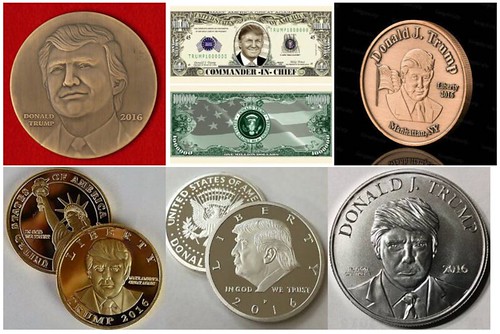 Thanks. It will be interesting to see the inaugural medal design proposals. -Editor
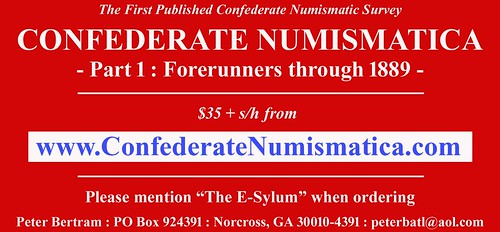 Wayne Homren, Editor The Numismatic Bibliomania Society is a non-profit organization promoting numismatic literature. See our web site at coinbooks.org. To submit items for publication in The E-Sylum, write to the Editor at this address: whomren@gmail.com To subscribe go to: https://my.binhost.com/lists/listinfo/esylum All Rights Reserved. NBS Home Page Contact the NBS webmaster 
|
